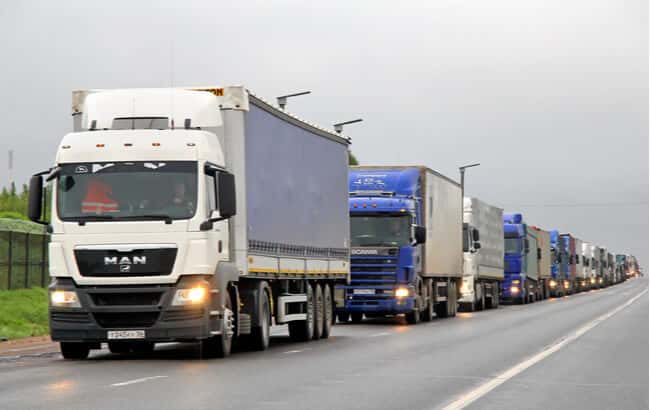When goods cross borders there are multiple document requirements that operate behind the scenes, the task normally falls on the shipping agent/freight agent who is transporting the goods, but some traders perform the declarations themselves.
The computer software that HMRC uses to record and track movement of goods is called CHIEF (Customs Handling of Imports and Exports Freight) and has existed for over 30 years, unfortunately it is no longer fit for the 21st Century and the increased transactions brought about by Brexit.
This is quite a niche but for the casual reader it is still useful to understand the changes that are coming later this year, and even if you are not filing your own declarations, your freight agent/shipping agent will be and that may mean an increase in costs or increased potential for error as everyone adjusts to the new system.
CHIEF becomes CDS
The replacement software is called CDS (Customs Declaration Service) and has been operating in parallel with CHIEF, in the background since 2018. The CDS has also been used since January 2021 for goods movement to/from Northern Ireland. CDS is a more agile software platform that can handle significant scale, unlike the older CHIEF system.
HMRC has started to write to taxpayers who they identify as importers of goods and recently announced that the intention is to withdraw the import declaration function from 30th September 2022 with a full closure of CHIEF from 31st March 2023. HMRC have also published an article here for those who do not receive a letter from HMRC.
Impact
Most businesses who use Postponed Import VAT Accounting (PIVA) will already have enrolled onto CDS so that they can download their monthly postponed import VAT statements, but that is likely the only interactions many businesses will have with the CDS system.
The majority of import declarations are made by the shipping/freight agent who is handling the movement of the goods and these organisations should be comfortable in any transition period.
For the taxpayers who submit/self-file their own import declarations, the process of filing those declarations is performed via specialised software and will need to ensure that their software can interact with CDS before the switchover in September 2022.
Using CDS will generate a Movement Reference Number (MRN), created each time a declaration is submitted for imports or exports. The MRN identifies the individual package/consignment. This MRN is equivalent to the entry key used in CHIEF.
This MRN then links into the Goods Vehicle Movement Service (GVMS) which is a system designed to speed up the process of importing goods. Further details of MRN and GVMS here. As a note, when the GVS system went down in April 2022 that’s when we saw the major lorry tailbacks at ports!
Presumably, there will be training and guidance issued by the software providers to ensure that this happens in good time. HMRC have suggested that for taxpayers who file their own declarations, they should start migrating over to using CDS ahead of the September deadline.
Training
The switch to CDS will likely require training. There are significant differences between the data recording between the systems because CDS is designed to be digital whereas CHIEF was built around paper forms. So with CHIEF entries there are spaces for free-form details to be input, whereas with CDS there are codes to be used for various scenarios.
Another change is Customs Procedure Codes (CPC), these are used to indicate certain reliefs or schemes, such as Inward Processing Relief (IPR) or trade samples. Under CHIEF the CPC code was seven digits in length, under CDS it consists of a four digit procedure code followed by a three digit additional procedure code. The seven digit CHIEF codes are unique to a good/item, whereas with CDS involve interchangeable combinations depending on the specific circumstances.
There are other changes too, the last main change being on the paper SAD form (Single Administrative Document) there are 68 boxes to tick/complete, with CDS there are significantly more (91 initially) with additional sub-set boxes depending upon the nature of the import/export.
Plan now to avoid problems later
As the CHIEF and CDS codes are not interchangeable, there will be a period of transition where human error may input CHIEF codes/boxes into CDS which will cause the submission to be rejected, which in turn could lead to delays at the customs point/port.
Besides, any significant change in computer systems (such as Making Tax Digital for VAT) can often bring steep learning curves and room for error initially. So for those who do file their own declarations then the takeaway is to start the transition and training now.
For those who don’t file their own declarations, which is the vast majority, then be prepared for additional information requests from your shippers/couriers. In reality, customs procedures are not a concern for most traders but it’s useful to have an awareness of the changes coming to help you get ahead of the curve and avoid potential issues down the line.
Do get in touch if you would like to discuss any of the issues raised in this article by filling out the form below or contacting Jason Croke directly.
Contact Us
"*" indicates required fields


Sign up to our newsletter
Join our mailing list to receive regular updates on
the news and events you need to know about.
